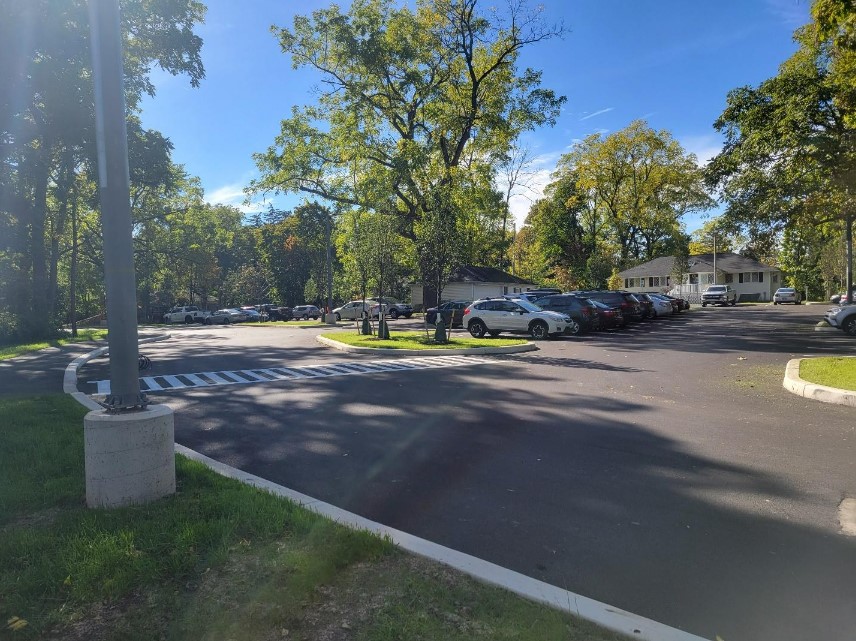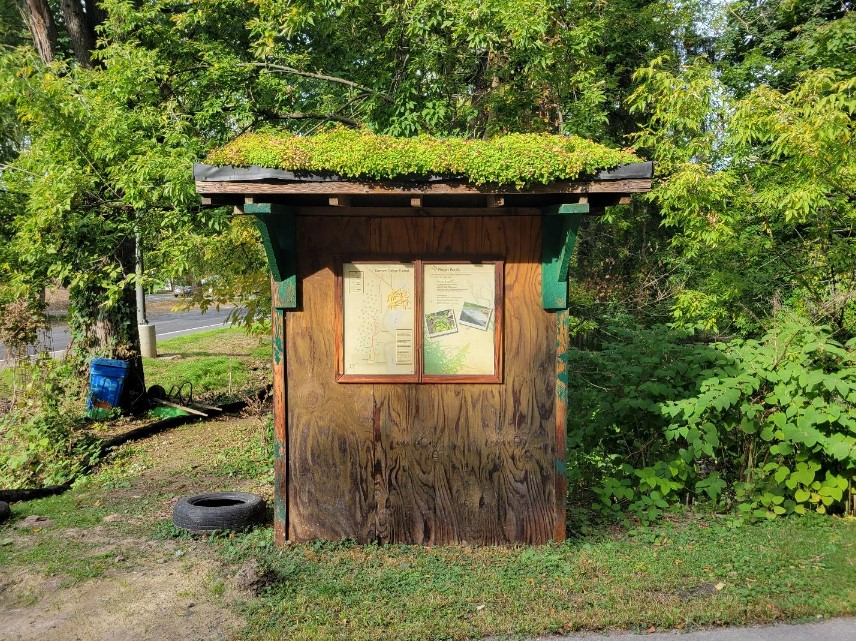By Cameron Enders
Daemen has outlined in the 2020-2025 Facilities Master Plan an ambitious five years of campus improvements.
The Daemen Public Square is one the university hopes to have completed next summer.
The new construction will replace the parking lot between the Wick Student Center and Duns Scotus and serve as a long-deserved campus quad for the school.
“The knoll is definitely a plus and hedgerows would be nice,” Glenn Sharkey, a physical therapy major (2028), said after seeing the proposed Daemen Public Square blueprint.
“The new quad is going to be good for bringing the campus community together,” Heather Mackay, a history and political science major (2024) said when asked about the project.
The Daemen Public Square is a great addition to the university that will turn a parking lot into a nice green space for students and faculty to enjoy.
It will also reduce threats to pedestrian safety as they make the walk between the two buildings.
The parking situation on campus is not the greatest, and the loss of an entire lot would be inexcusable for the Daemen community. Thankfully, the Daemen administration already has a solution.

New additions of property on Getzville Road have been transformed into two parking lots, with a third on the way alongside the quad’s construction.
The lots are, and will be, located primarily behind Canavan and have a connecting road that goes behind the building so the walk for students and faculty will not be too extreme.
Even with this good news, some questions on the impact the parking lots will have on the Ecotrail still linger.
The Ecotrail was a project led by Dr. Brenda Young and Professor Kevin Kegler in 2006 in collaboration with over 90 students according to a National Wildlife Federation Campus Ecology case study.
The trail was a service-learning project that had students plant native plant species, turn discarded materials into benches and art installations, and build a tool shed with a green roof.

Since then, the Ecotrail has remained a place open to all students and faculty along with a home for a variety of local wildlife.
“The Ecotrail on campus really represents our sustainability and our connection with the environment,” Alex Hangen, a nature science and environmental studies major (2024) said about the Ecotrail.
“The Ecotrail is really something that stands out for our science program,” Hangen said.
While these new parking lots are necessary to ensure the parking situation on campus does not get any worse, their impact on the Ecotrail may not have been properly measured.
With the way they were designed, there is some concern over how the new drainage system will impact the water quality of the creek that runs along the trail.
“If I were to design this, I wouldn’t have put in curbs because I would have let any runoff from this go onto the vegetation and sink in naturally,” Dr. Brenda Young, Chair of Global and Local Sustainability, said about the parking lot design.
“So, [if] your car is leaking oil, it goes down the drain. If your car was leaking oil and washed in here [referring to the vegetation] it would detoxify,” Young said.
With the addition of the new parking lots, an exciting new addition to the Ecotrail was abruptly ended.
Student Alex Hangen was tasked with renovating the Ecotrail over this summer and one such project aimed to make it better was the addition of a rain garden just behind the exit to the trail.
“Unfortunately, I guess that the rain garden was overlooked in the construction process,” Hangen said in regard to the rain garden project he was working on.
“I was putting up some poles and some flagging tape so that they hopefully wouldn’t touch it, and the construction crew came over and basically told me I couldn’t do that,” Hangen said.
“It just wasn’t the best practice,” Dr. Young said about the designing of the parking lots.
“If they had talked to me or if they had talked to people from the county who do these all the time, we’d say it’s a big parking lot. Let’s work with you on the design. This is how it should be better designed,” Young said.
Yet the blame does not lie on the university as Hangen said, “This is not a fault of Daemen itself, our facilities and Dr. Nayor were great in the aspect that they worked with me and Dr. Young to get things reimbursed when things were destroyed. I feel like Daemen itself did a relatively good job handling it.”
It’s clear the university did everything they could to make up for damages to the Ecotrail.
The new parking lots are a necessity to ensure students and faculty have enough parking space on campus, yet better planning and communication with the construction company could have avoided the need for compensating damages to the trail.

